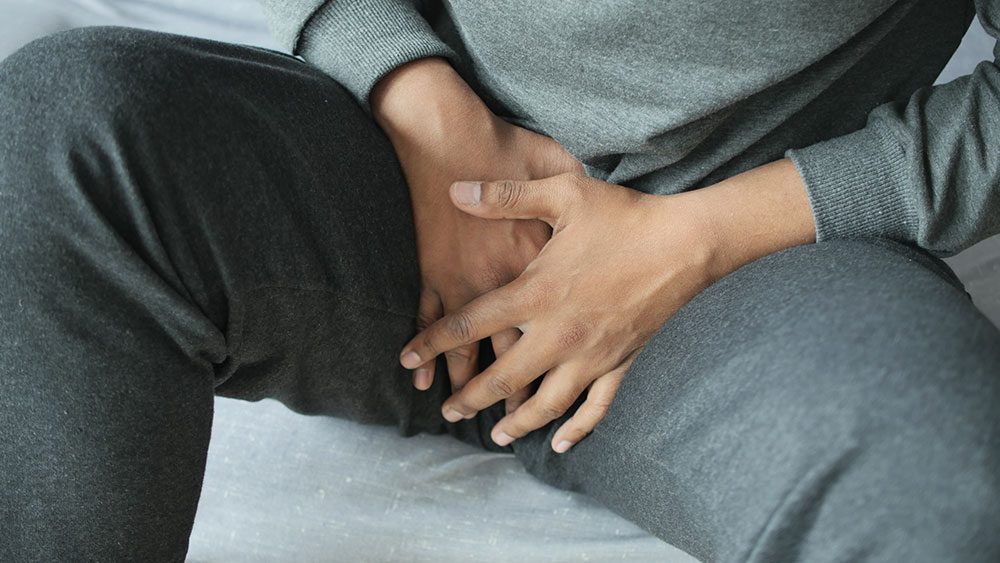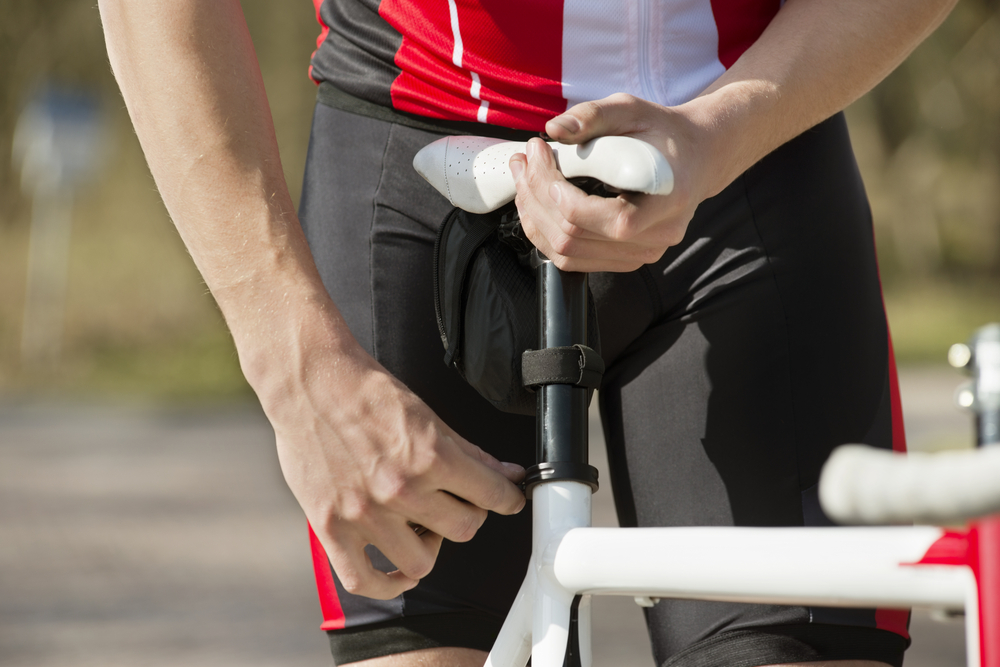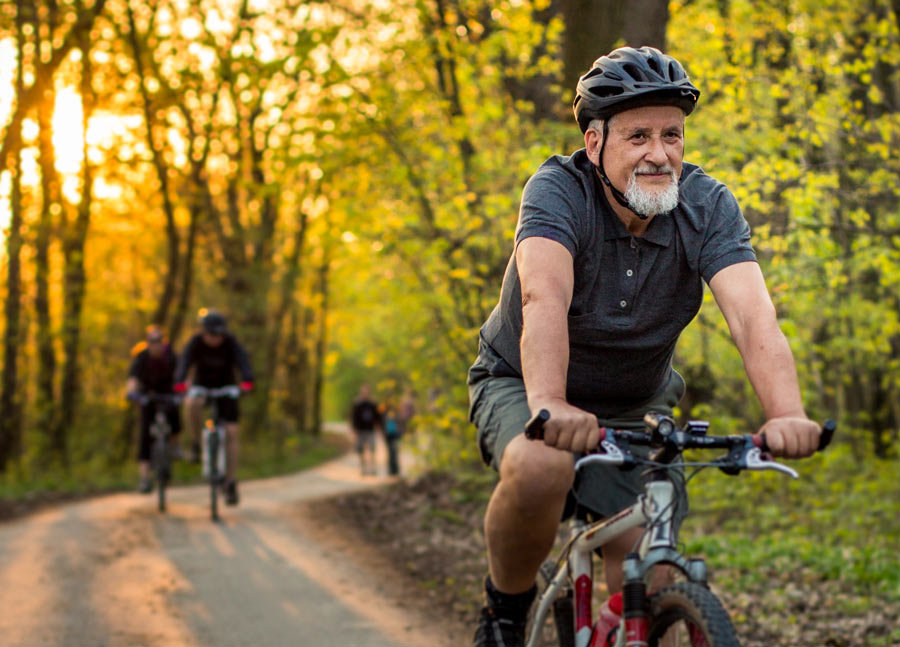Cycling is widely praised for its cardiovascular benefits, eco-friendliness, and ability to boost mental well-being. But for many riders—both seasoned athletes and weekend warriors alike—there’s an uncomfortable reality that’s often left out of the conversation: genital numbness.
If you’ve ever gotten off your bike and noticed a tingling, numb, or even completely “asleep” feeling in your groin, you’re not alone. This common issue affects a significant number of cyclists, yet it’s rarely discussed openly due to embarrassment or lack of awareness. But here’s the truth: persistent numbness or discomfort in the genital area isn’t just a minor inconvenience—it could be a sign that your saddle, posture, or bike fit is putting unhealthy pressure on sensitive nerves and blood vessels.
Recommended: Why Is My Penis Head Losing Sensitivity?
In this post, we’ll break down why this happens, how to recognize when it’s a problem, and what you can do to prevent it—so you can enjoy your rides without risking your health.
Why Genital Numbness Happens
Genital numbness while cycling happens because prolonged pressure from the bike seat compresses nerves and blood vessels in the pelvic area, particularly the pudendal nerve. This nerve controls sensation in the genitals and surrounding regions, so when it’s pinched or blood flow is restricted, you can experience tingling, numbness, or discomfort. The design of the bike seat and the rider’s position play a big role in how much pressure is applied to sensitive areas.

Certain factors increase the risk of numbness, including long rides without breaks, poorly fitted bikes, and narrow or hard saddles. Men tend to be more affected due to anatomical differences, but women can also experience symptoms. Paying attention to these warning signs is important, as ignoring them can lead to more serious problems. Proper bike fit, suitable saddle choice, and regular breaks can help reduce or prevent numbness and keep rides comfortable and safe.
The Role of Bike Seat Design
The design of your bike seat plays a crucial role in whether you experience genital numbness while riding. Traditional bike saddles are often narrow and firm, designed more for performance than comfort, which can place excessive pressure on the sensitive perineal area — the spot between the sit bones where nerves and blood vessels pass through.
Recommended: Why Do My Erections Disappear During Foreplay?
Different seat shapes, widths, and padding levels affect how weight is distributed. A seat that’s too narrow or too wide can cause uneven pressure, leading to nerve compression. For example, narrow saddles might concentrate pressure on soft tissues, while overly wide seats can pinch the thighs and force you into an unnatural posture.
Many modern saddles feature ergonomic designs to help reduce pressure. These include cut-out or relief channels that create a gap in the center of the seat to relieve pressure on the perineum, as well as noseless or split designs that aim to reduce contact with sensitive areas altogether. Additionally, there are gender-specific saddles shaped to better fit the anatomical differences between men and women, though comfort varies individually.
Choosing the right seat means balancing support for your sit bones with minimal pressure on soft tissues, which can significantly reduce numbness and improve overall comfort on the bike.
Riding Position and Its Impact
Your riding position greatly influences how pressure is distributed across your bike seat and, consequently, whether you experience genital numbness.
Aggressive Forward-Leaning Position
This is typical for road racers and competitive cyclists, where the rider leans deeply over low handlebars.
This position tilts the pelvis forward, shifting most of the body weight onto the perineum rather than the sit bones. As a result, it increases pressure on nerves and blood vessels, making genital numbness much more likely.
Recommended: How to Fix Delayed Ejaculation from Antidepressants
Moderate Sporty Position
A slightly less aggressive posture with the torso bent forward but handlebars set higher than in racing.
Weight is more evenly distributed between the sit bones and perineum, reducing but not eliminating pressure on sensitive areas. This position strikes a balance between performance and comfort.
Upright or Relaxed Position
Common on commuter bikes, cruisers, or city bikes, where the rider sits almost straight up.
Most of the rider’s weight rests on the sit bones, which are better suited to handle pressure. This greatly reduces compression of nerves and blood vessels, making numbness far less common.
Standing Position (Out of the Saddle)
When riders stand on the pedals, often during climbs or sprints.
Weight shifts off the saddle completely, eliminating pressure on the perineum. This can provide temporary relief if numbness occurs during a ride.
Can Bike Seats Really Cause Numbness in Genitals?
Absolutely, yes — bike seats can cause numbness in the genitals. Here’s why:

When you sit on a bike saddle, especially for long periods or on a poorly designed seat, it puts pressure on the perineum — the sensitive area between your sit bones where important nerves and blood vessels pass through. This pressure can compress the pudendal nerve, which carries sensation signals from the genitals, and restrict blood flow. When nerves are pinched or blood flow is reduced, numbness, tingling, or discomfort can occur.
Recommended: Are Kegel Exercises Effective for Premature Ejaculation?
So, while cycling is a great exercise, the wrong seat or poor bike fit can lead to temporary numbness or, in some cases, more serious issues like nerve irritation. The good news is that with the right seat design, proper bike adjustments, and smart riding habits, you can prevent or significantly reduce this problem.
Types of Saddles That Can Help
Choosing the right bike saddle is key to preventing genital numbness and improving overall comfort. Different saddle designs focus on reducing pressure on sensitive areas and supporting your sit bones more effectively.
1. Cut-Out Saddles
These saddles feature a central cut-out or relief channel that reduces pressure on the perineum by creating a gap where the sensitive nerves and blood vessels pass through. This design helps maintain better blood flow and reduces nerve compression, making it a popular choice for riders experiencing numbness.
2. Noseless Saddles
Noseless or split-nose saddles remove or reduce the front “nose” of the seat, which can dig into the perineum in traditional designs. Without the nose, there’s less pressure on soft tissues, but these saddles require some adaptation in riding style since they offer less forward stability.
Recommended: How to Increase Penile Girth Naturally
3. Gender-Specific Saddles
Because male and female anatomies differ, many manufacturers design saddles tailored to each gender. Women’s saddles often have a wider rear to support broader sit bones and a shorter nose to reduce pressure, while men’s saddles typically feature narrower shapes with more padding in targeted areas.
4. Gel and Foam Padding
While padding doesn’t solve pressure issues alone, gel or memory foam can improve comfort by cushioning the sit bones and reducing friction. However, too much soft padding can cause more pressure on soft tissues by allowing the body to sink in excessively.
5. Split or Dual-Density Saddles
Some saddles combine firm support in areas that need stability with softer materials where pressure relief is needed, offering a balanced ride that protects nerves while maintaining control.
Adjusting Your Bike for Comfort and Safety
Proper bike fit is essential to reduce pressure on sensitive areas and prevent genital numbness. Small adjustments to your bike setup can make a big difference in comfort and long-term health.
1. Saddle Height
A saddle that’s too high or too low can cause you to shift your weight incorrectly, increasing pressure on the perineum. Your leg should have a slight bend at the knee when the pedal is at its lowest point, allowing efficient pedaling without excessive rocking or pelvic tilt.
Recommended: Can You Leave a Penile Implant Partially Inflated?
2. Saddle Angle
Ideally, the saddle should be level or tilted very slightly downward. A nose tilted too far down can increase forward pressure on the perineum, while tilting it upward can cause you to slide forward and put more weight on your hands and wrists.
3. Fore-Aft Saddle Position
Moving the saddle forward or backward affects your riding posture and where your weight is distributed. If it’s too far forward, you may put excessive pressure on the soft tissues; too far back can cause overreaching and discomfort. Adjust gradually and test for comfort.
4. Handlebar Height and Reach
Handlebars that are too low or far away can force you to lean too far forward, increasing pressure on the perineum. Raising the handlebars or shortening the stem can help you maintain a more upright posture, reducing this risk.
5. Professional Bike Fit
If you experience ongoing discomfort, a professional bike fitting session can identify and correct subtle alignment and posture issues. Experts use tools and measurements to customize your bike to your body, helping prevent numbness and improve performance.
Recommended: Where do You Put TENS Pads for Erectile Dysfunction?
Preventive Measures and Long-Term Solutions
Preventing genital numbness while cycling often comes down to smart habits, proper gear, and good bike setup. Here are some effective strategies to keep discomfort at bay and protect your long-term health.
1. Take Regular Breaks
On longer rides, stand up on the pedals or take short breaks off the saddle every 20–30 minutes. This helps relieve pressure on the perineum and restores healthy blood flow.
2. Wear Proper Cycling Shorts
Padded cycling shorts are designed to cushion your sit bones and reduce friction. Look for high-quality shorts with a chamois pad that fits well and suits your riding style.
3. Maintain Good Posture

Keep your riding position balanced, avoiding excessive forward lean. Regularly check your bike fit and adjust handlebars or saddle angle as needed.
4. Choose the Right Saddle
Invest in a saddle designed to reduce pressure on sensitive areas—such as cut-out, noseless, or gender-specific models. Testing different options can help find what works best for you.
Recommended: Is Ginger Tea Good For Prostate Enlargement?
5. Strengthen Core and Pelvic Muscles
Exercises that build core and pelvic floor strength improve your posture and stability on the bike, helping you maintain better weight distribution and reduce pressure.
6. Stay Hydrated and Avoid Excessive Alcohol
Good hydration supports healthy circulation, while excessive alcohol can exacerbate numbness and nerve sensitivity.
7. Listen to Your Body
If numbness or discomfort persists, don’t ignore it. Adjust your setup, rest as needed, and consult a healthcare professional if symptoms continue.
Conclusion
Genital numbness while cycling is a common issue that often stems from pressure on sensitive nerves and blood vessels caused by bike seats and riding posture. Fortunately, with the right bike fit, saddle choice, and riding habits, most riders can prevent or significantly reduce this discomfort.
Listening to your body, making smart adjustments, and investing in quality gear are key steps to enjoying longer, more comfortable rides. Remember, prioritizing comfort isn’t just about avoiding numbness—it’s about protecting your long-term health and enhancing your overall cycling experience.
